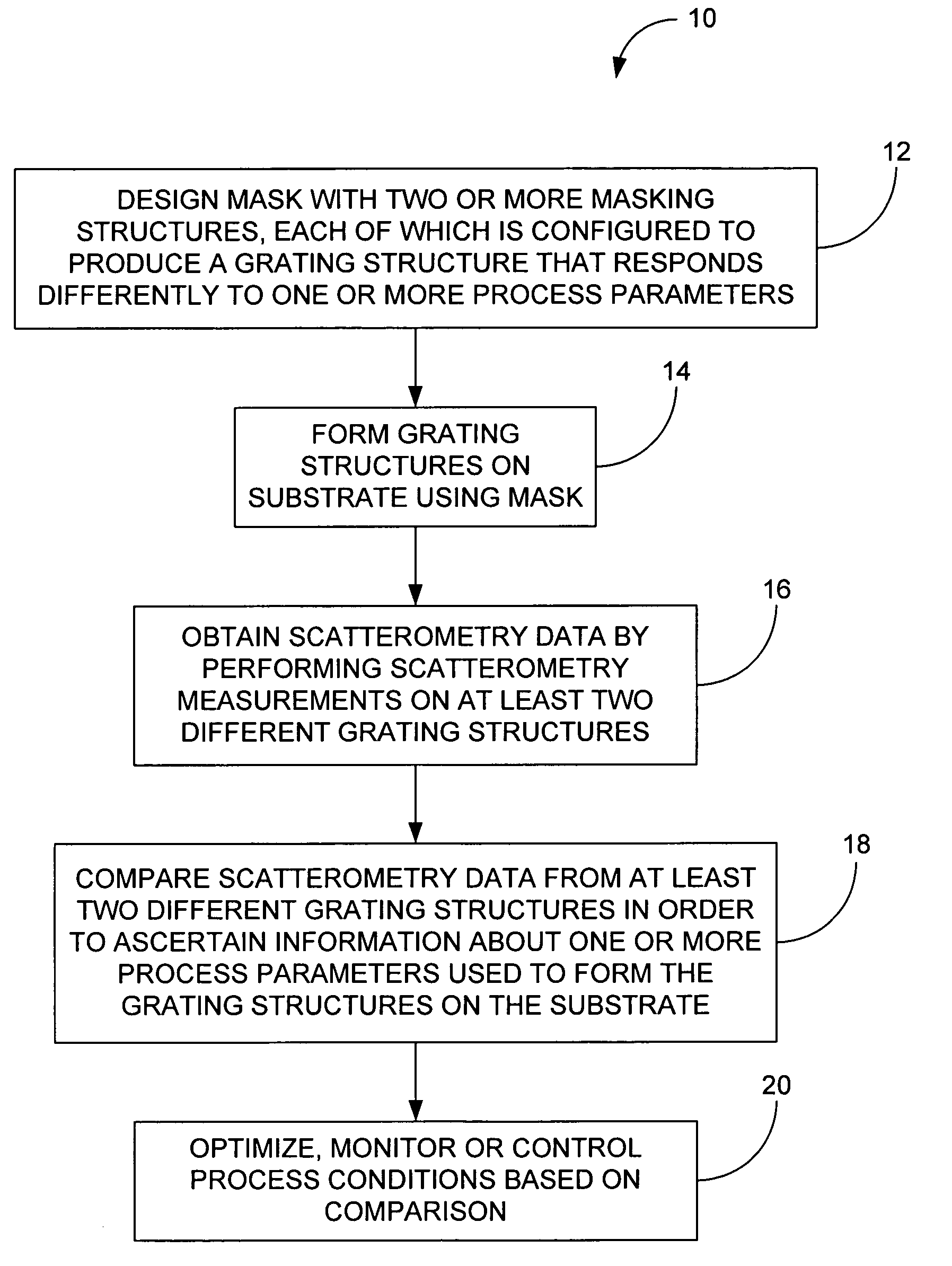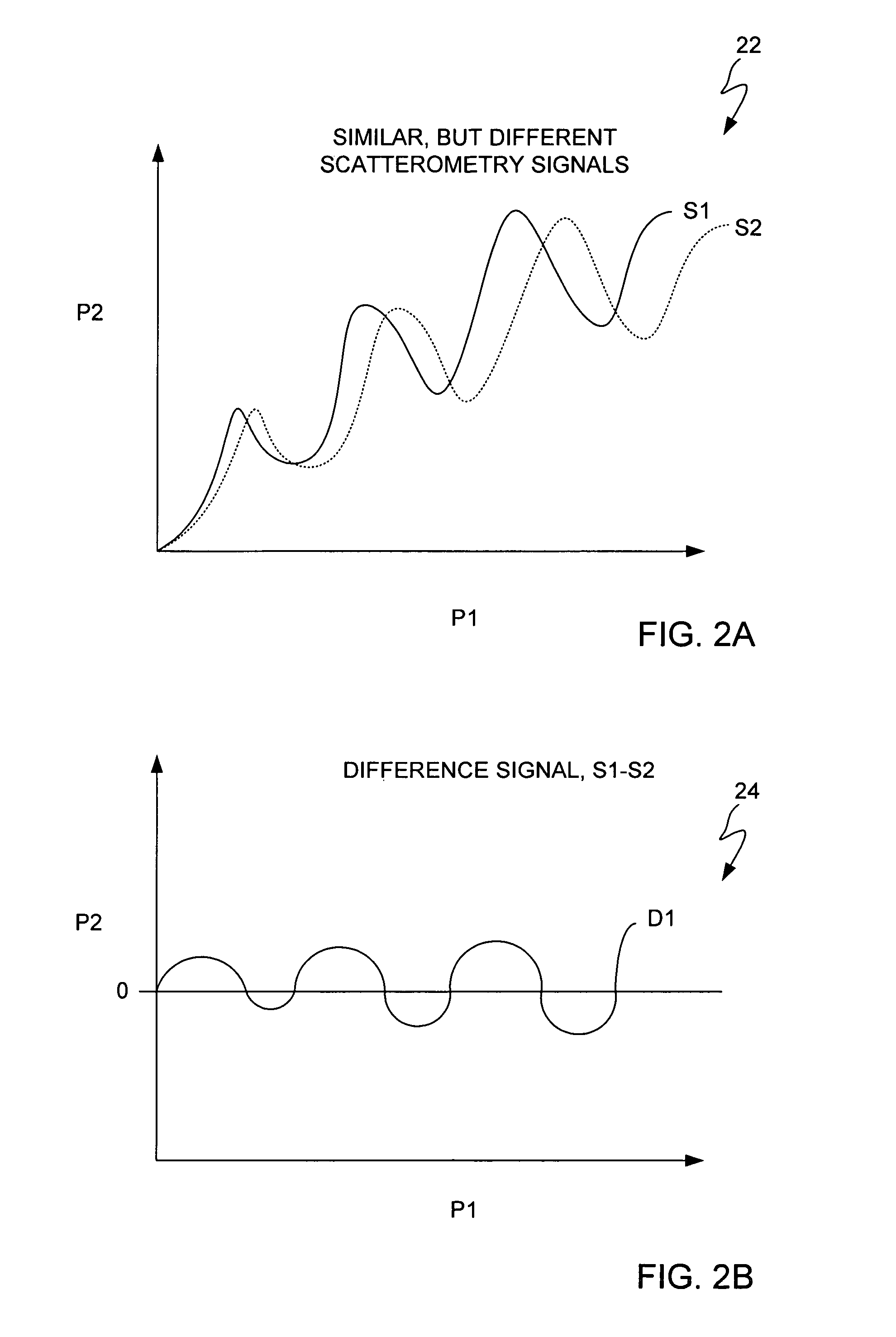Method for process optimization and control by comparison between 2 or more measured scatterometry signals
a scatterometry signal and process optimization technology, applied in the field of photolithography methods and systems, can solve the problems of short circuits, reducing the selling price of chips, and the final circuit may not run properly or not at all
- Summary
- Abstract
- Description
- Claims
- Application Information
AI Technical Summary
Benefits of technology
Problems solved by technology
Method used
Image
Examples
Embodiment Construction
[0037]The general objective of the invention is to monitor, optimize and control photolithographic processes using scatterometry measurements and carefully designed measurement sites. The invention generally includes measuring two or more measurable patterns that are configured to produce different scatterometry signals. The differences between the signals are preferably due to one or more process parameters used to create the measurable patterns. The difference signals therefore can be monitored to determine the best process conditions for photolithographic process. For example, information about the process parameters can be extracted out of the difference signals since the differences are based at least partially on the process parameters.
[0038]More particularly, the invention includes performing scatterometry measurements on a set of at least two grating structures that have differences that are attributable to one or more process parameters, i.e., when the grating structures we...
PUM
| Property | Measurement | Unit |
|---|---|---|
| angles | aaaaa | aaaaa |
| DA | aaaaa | aaaaa |
| wavelengths | aaaaa | aaaaa |
Abstract
Description
Claims
Application Information
 Login to View More
Login to View More - R&D
- Intellectual Property
- Life Sciences
- Materials
- Tech Scout
- Unparalleled Data Quality
- Higher Quality Content
- 60% Fewer Hallucinations
Browse by: Latest US Patents, China's latest patents, Technical Efficacy Thesaurus, Application Domain, Technology Topic, Popular Technical Reports.
© 2025 PatSnap. All rights reserved.Legal|Privacy policy|Modern Slavery Act Transparency Statement|Sitemap|About US| Contact US: help@patsnap.com



